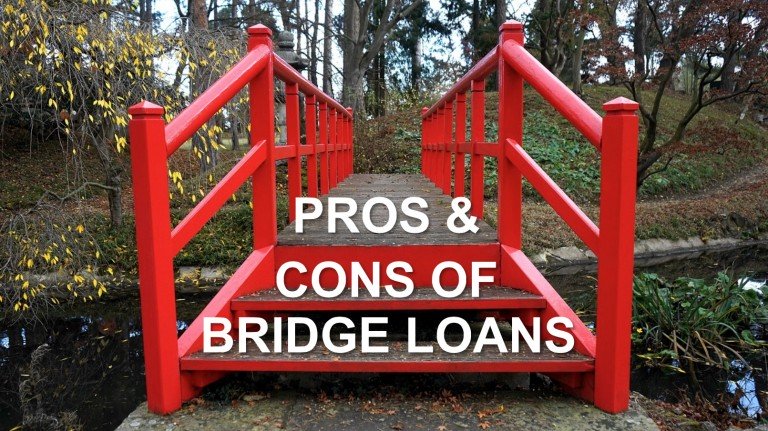Updated on November 30, 2023
A bridge loan is a loan of money to cover a gap in time and money between two transactions, typically the gap is the buying of one house and the selling of another. There are pros and cons to using a bridge loan, which we explain below.
Bridge Loan Pros:
- Temporary Funds for Transitional Periods: Bridge loans are ideal for covering gaps between transactions, particularly in real estate, where timing mismatches occur between buying a new home and selling an existing one.
- Facilitates Non-Contingent Offers: In competitive markets, bridge loans enable buyers to make non-contingent offers, increasing their chances of securing a new home even when their funds are tied up in another property.
Bridge Loan Cons:
- High Interest Rates and Transaction Costs: Due to their temporary nature and associated risks, bridge loans often come with higher interest rates and significant transaction costs compared to standard loans.
- Risk of Multiple Loans: If the original property doesn’t sell as planned, borrowers may end up with multiple loans (the original mortgage, the bridge loan, and the new mortgage), leading to financial strain.
Bridge Loan Pros And Cons – Details
In a highly competitive seller’s market, a savvy seller may not be willing to wait on the buyer’s sale of their home, so an eager buyer would then make a non-contingent offer to buy the new home. The problem is that often times the buyer will need the down payment from the sale of their prior home to use for the purchase of the new home. The big benefit of a bridge loan is that it allows the buyer to be competitive in their offer to buy even though their down payment is tied up in another property.
Finally, the biggest con is there is a potential where the borrower on the bridge loan buys a new property using the bridge money loan but then fails to sell the home they are seeking to sell. As a result, the buyer would now have 3 loans instead of 1. Remember the buyer’s goal is to sell the first house and use that money to buy a new house – to extinguish their old home loan so that they can get a new home loan on their new purchase. Thus the goal is to go from one loan to another. But, with a bridge loan there is a potential where the buyer could have 3 loans if their house does not sell – the original loan, the bridge loan and the new loan. This could place severe and dire financial constraints on the buyer and could even lead to a default. This risk, however, is lessened by the fact that most lenders will not lend on a bridge loan without an analysis of risk based on the possibility that the first house may not sell.
Relevant FAQs:
Q1: What is the primary purpose of a bridge loan in real estate transactions? A1: The primary purpose of a bridge loan in real estate is to provide temporary financing to cover the gap between buying a new property and selling an existing one, allowing for smoother transaction timing.
Q2: What are the risks associated with taking a bridge loan? A2: The main risks include higher interest rates and transaction costs, and the potential financial burden of managing multiple loans if the original property does not sell in a timely manner.
Q3: Is a bridge loan a good option for all home buyers? A3: Bridge loans are best suited for buyers in competitive markets who need to make quick, non-contingent offers. However, they may not be ideal for everyone due to the associated costs and risks.
For help with your real estate matter, contact our Los Angeles real estate attorneys at Schorr Law, APC. Our team of experienced real estate attorneys have a wide depth of experience with nearly all types of real estate matters and are happy to assist you. Use the Contact Form, give us a call, or email us to inquire about scheduling a consultation.
